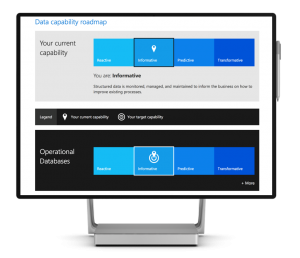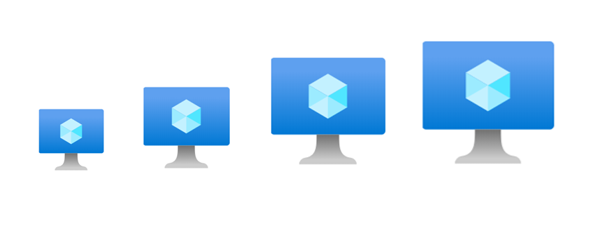CLOUD COMPUTING
Essential element to complete the digital transformation of companies.
At REVERTIS, we believe that the cloud is an essential element to complete the digital transformation of enterprises. The current pandemic situation has contributed to greatly accelerate the demand for cloud computing, both by enterprises and individuals.
From REVERTIS we want to help people and companies to speed up their migration to the cloud. Adapting to their needs and providing the best ideas, as well as our best capabilities, skills and investments to successfully achieve the digital transformation: It is our goal.

We understand that the cloud is the real embodiment of computing as consumption. That is, through the use of the cloud, it is possible to consume the level of computing required and adapted to each moment, according to the punctual demand of your infrastructures.
This means that your systems, such as servers, networks, storage and other traditional elements, are “virtualized” and managed externally by a cloud service provider, with full or even more guarantee and security than on-premise. In this way, we prevent organizations from having to make large upfront investments to purchase IT equipment and, at the same time, we enable immediate implementation and availability of computing for new businesses.

Cloud computing can be deployed in different ways depending on the services you need.
The first element to consider is the deployment model:
The next element to consider is the type of service we will choose in the cloud, we can choose to focus on one type of service or have several, it all depends on our needs,
In order to plan a correct cloud migration strategy, we must take into account both of the key factors mentioned above.

Connecting to a public cloud means needing and using an Internet connection to access computing resources hosted in data centers managed by a third-party cloud service provider, rather than owning and maintaining these resources in our data center. A shared public cloud has many organizations (or tenants) sharing the same infrastructure and even some services.
The largest current cloud service providers with data centers are: Microsoft (Azure), AWS(Amazon Web Services), Alibaba (Alicloud) and Google (Google Cloud). Other cloud providers include IBM and Oracle.
This cloud model is ideal for organizations that are concerned about sharing resources or data in a public cloud. The ideal data for this type of cloud tends to be the most sensitive. It is deployed on servers owned and maintained by the organization that are accessed via the Internet or a private internal network, depending on each case.
A private cloud environment gives you complete control over data and security in order to meet specific regulatory and other compliance requirements (e.g. HIPAA for healthcare, GDPR, GxP for pharma, etc).
Microsoft Azure has extensive regulatory compliance, you can ask us for more information on a case-by-case basis.
Many organizations use a combination of various cloud environments and On-Premise environments. Hybrid cloud usually includes a combination of public cloud and private cloud. To create a hybrid cloud architecture, communication between the different environments must generally be established.
Hybrid cloud eliminates dependency on a single cloud provider and allows for additional levels of flexibility in terms of capabilities, security compliance, etc.
Multi-cloud is when an organization uses services from multiple public cloud providers.

SaaS is currently the most widely used cloud application service. The provider is responsible for managing and delivering all layers of services according to the business need.
With SaaS, an organization accesses a specific software application hosted on a remote server and managed by a third-party provider. The application is usually accessed through a web browser, one of the requirements is to have a subscription and license at the provider.
Companies typically use SaaS when they have a need to quickly and easily enable access to the cloud system with minimal management and development.
SaaS is suitable for applications that require cross-platform access, short-term projects that require rapid collaboration, and for startups that need to quickly deploy websites without having to deal with the hassles of servers or software development in between.
One of the most popular SaaS products is Microsoft Office 365.
PaaS is the preferred option for companies that want to create unique applications without making large financial investments. In this case, the provider is in charge of managing and providing all the layers of services according to the business need, except for the applications and data, which will be implemented by the user or company itself.
In PaaS, an organization accesses a predefined environment for software development that is used to deploy, test and run applications, so developers do not need to start from scratch to create applications.
PaaS allows developers to spend their time on the creative side of software development, instead of performing tasks that may not be entirely theirs, such as writing extensive code, managing servers or software updates or security patches.
Examples of PaaS products: SQL servers and web servers.
IaaS is the simplest option as a concept for businesses. It is most similar to a traditional On-Premise environment, with the difference that the provider is in charge of managing and providing the network, storage, server and virtualization layers.
In IaaS, companies migrate their servers and storage to the cloud instead of buying and maintaining their own on-premise infrastructure.
IaaS provides management and orchestration with the same technologies and capabilities as a traditional On-Premise data center. It includes full control over server instances. The company’s administrators are responsible for managing databases, applications, updates, paches, security, etc.




As defined by the National Institute of Standards and Technology (NIST):
Services can be requested and provisioned quickly and automatically, without the need for any manual execution or configuration.
In a public cloud environment, users “plug in” to data and applications through an Internet connection that gives them anytime, anywhere access.
In the cloud, the multiple tenancy model is often used. This means that a single application is shared among multiple users. Multiple users or “tenants” can configure the application according to their specific needs. Instead of creating a copy of the application for each user.
Cloud platforms are elastic. An organization can scale its resource usage levels up (more) or down (less) quickly and easily as needs change.
In the cloud, you often pay per use, where you only pay for what you use. Similar to how a utility company measures the amount of water, electricity or gas you use and charges based on consumption: the cloud applies the same ideology.
